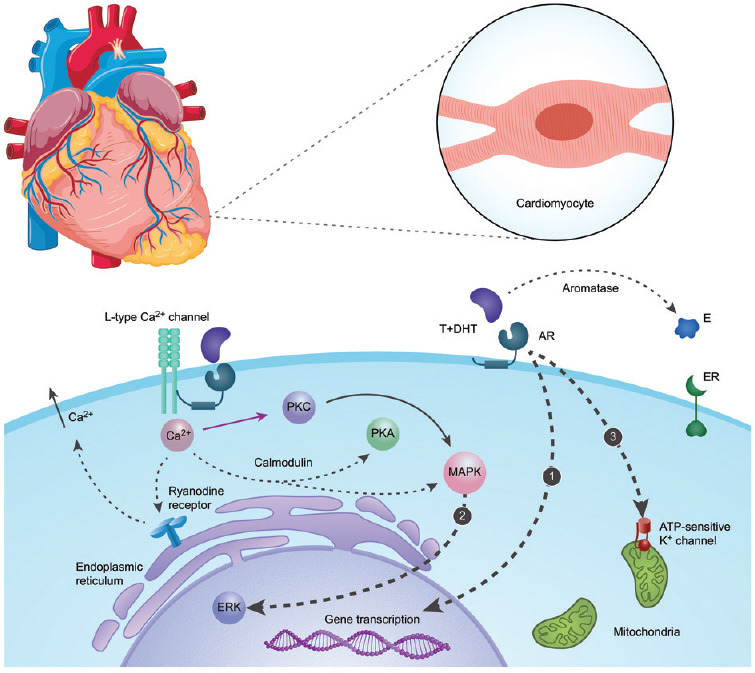Figure 1.

The main actions of androgen in cardiomyocytes. (1) Genomic pathway: androgen freely passes through the membrane and binds cytoplasmic AR. Bound AR translocates to the nucleus, binds to a DNA response element on the promoter of an androgen-responsive gene, and stimulates transcription. (2) Nongenomic pathways: androgen interacts with a membrane-associated androgen receptor, leading to the activation of L-type calcium channels. This increase in intracellular calcium can lead to the activation of PKC and, via calmodulin, lead to the activation of the PKA and MAPK pathways. The initial influx of Ca2+ further stimulates the efflux of Ca2+ from the sarcoplasmic reticulum via ryanodine receptor type-2 channels. Ca2+ from these sources converges on the MAPK/ERK pathway, through which ERK subsequently translocates to the nucleus and interacts with transcriptional factors. (3) Testosterone induces cytoprotection by activating ATP-sensitive K+ channels in the cardiac mitochondrial inner membrane. T: testosterone; DHT: dihydrotestosterone; E: estradiol; AR: androgen receptor; ER: estrogen receptor; PKA: protein kinase A; PKC: protein kinase C; MAPK: mitogen-activated protein kinase; ERK: extracellular signal-regulated kinase.
